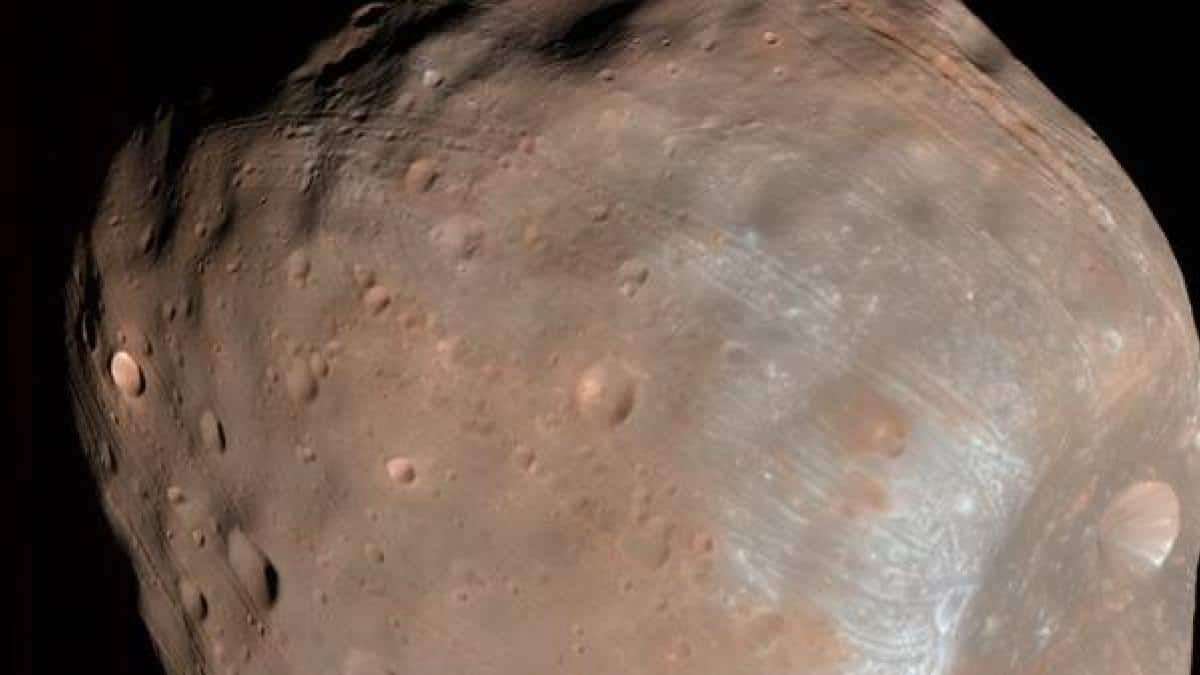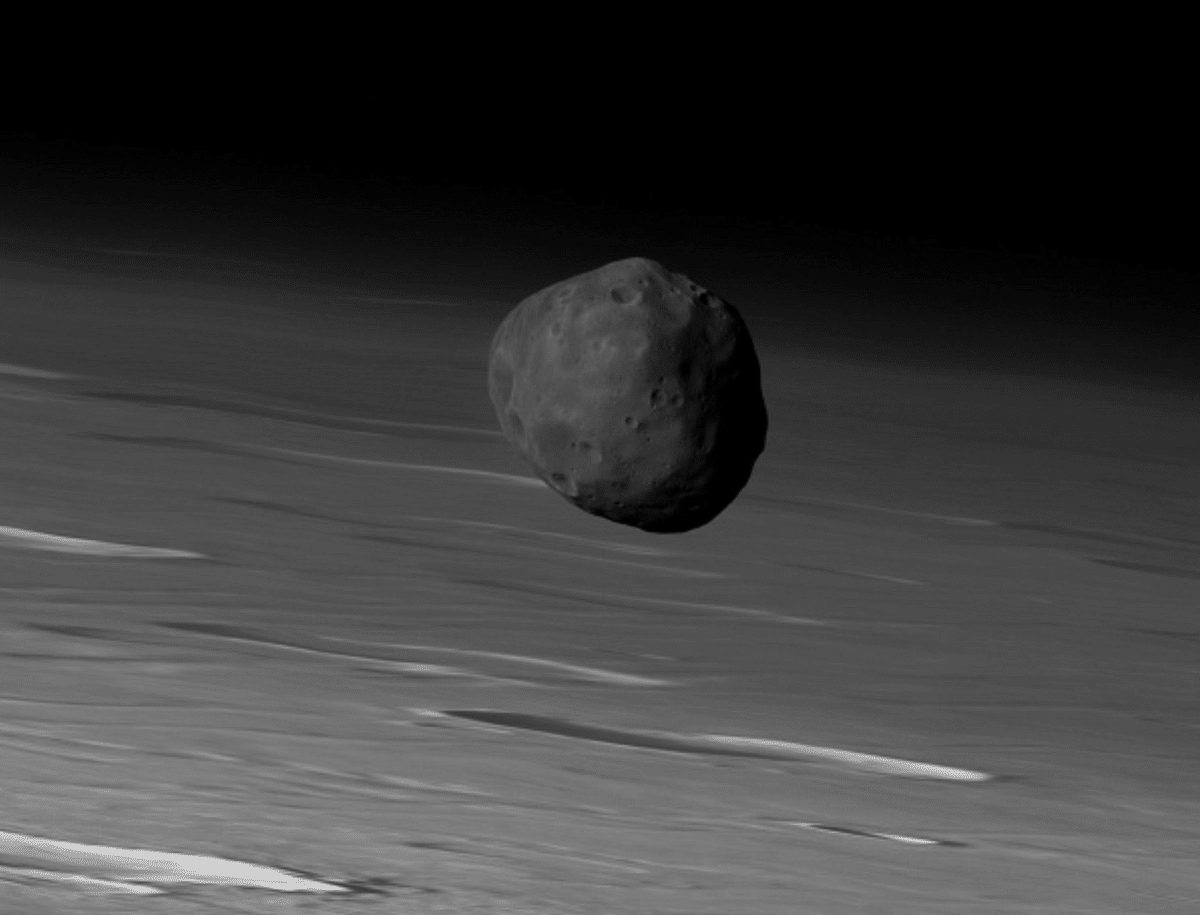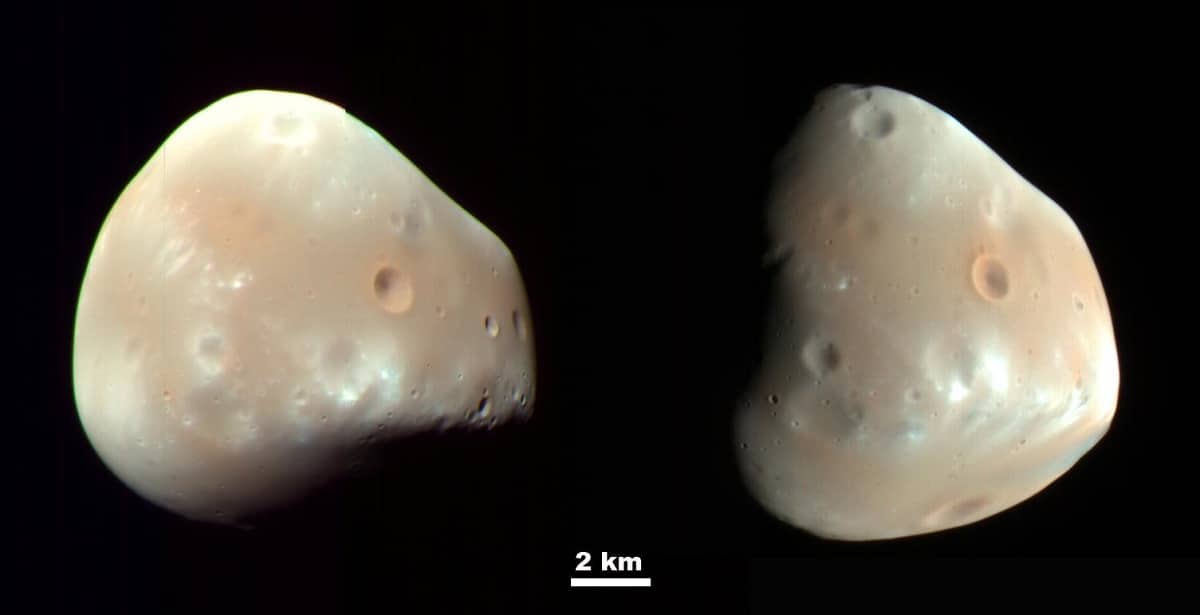
The two moons of Mars are Phobos and Deimos. These moons of Mars are probably captured asteroids from the main asteroid belt that lies between Mars and Jupiter. Phobos It is the larger of the two moons of Mars, measuring 13,4 kilometers on its longest side, 11,2 kilometers wide, and 9,2 kilometers in diameter. It makes one rotation 9380 kilometers from the center of Mars, or less than 6000 kilometers from the surface, every 7,5 hours. The satellite was discovered on August 18, 1877 by the American astronomer Asaph Hall (1829-1907).
In this article we are going to tell you everything you need to know about the Phobos satellite, its characteristics, discovery and importance.
Key features

Phobos, whose name means "fear" in Greek, It was discovered in 1877 by the American astronomer Asaph Hall. It is the largest satellite of Mars, but it is still quite small compared to other satellites in our solar system, with a diameter of approximately 22 kilometers.
One of the most notable features of Phobos is its irregular and elongated shape. Its surface is covered in craters, indicating a violent past and an interesting geological history. In addition, it shows grooves and ridges, suggesting that it could have undergone fracturing processes due to tidal forces generated by Martian gravity.
Its orbit is extremely close to Mars. It is located at a distance of only 6,000 kilometers from the planet's surface, which is quite unusual for a natural satellite. This means that Phobos completes one orbit around Mars in approximately 7 hours and 39 minutes, much faster than the time it takes for Mars to rotate on its own axis.
Due to its proximity to Mars, this satellite is undergoing a process of orbital degradation. Over time, Martian gravity exerts tidal forces that are causing Phobos to move ever closer to the planet. Scientists believe that, in a few million years, the satellite will eventually disintegrate due to tidal forces and become a ring around Mars.
The Russian space mission, called Phobos-Grunt, was intended to land on Phobos, collect samples, and bring them back to Earth. However, the mission suffered a technical failure and was unable to meet its objective.
Phobos Stickney Crater

This satellite is riddled with impact craters, like all terrestrial objects in the solar system. At 9 km in diameter, Stickney crater is the largest crater on a Martian moon and is almost half the diameter of Phobos.
The crater carries Named for Chloe Angelina Stickney Hall, a mathematician and astronomer and wife of Asaph Hall. Despite the low gravity (0,005 m/s²), it can be assumed that material from the meteorite that hit Phobos slowly slid down the crater walls. Channels found on the satellite's surface are less than 30 meters deep, 100-200 meters wide and up to 20 kilometers long.
Phobos and Deimos

The names of the two moons of Mars are derived from Greek mythology, Phobos (fear) and Deimos (terror), twins of the god Ares and the goddess Aphrodite. Deimos is covered by a thick layer of particles ejected by the meteorite impact, which obscures the relief of its gradual crater filling.
The two moons, probably from the asteroid belt, were captured during their approach to Mars. Deimos is 23.460 kilometers from Mars and Phobos is 9.377 kilometers. Gravity on the surface of Deimos is very low (0,0039 m/s-2). Its density is only 2,2 g/cm3. His escape velocity is 22 km/h or 6 m/s), which would allow a person to leave the surface of Deimos simply by running.
Phobos is the larger of the two moons of Mars. It was also the closest to the red planet, taking 7 hours and 39 minutes. At the time of filming, Mars Express was 11 miles away, while Deimos was 800 kilometers away.
A notable distinction between these two moons is the shape of each. Phobos is elongated and irregular in shape, with a surface covered in craters and ridges. On the other hand, Deimos is more spherical and smooth in shape, with fewer craters. This difference in shape may be due to the different geological histories of each satellite.
The orbits also differ significantly. Phobos orbits Mars at a distance of approximately 6,000 kilometers from the planet's surface, making it one of the closest satellites compared to others in our solar system. Deimos is at a much greater distance, orbiting about 23,500 kilometers from the Martian surface. This difference in orbital distances also translates into differences in the orbital periods of both satellites around Mars.
As for its origin, there are different theories. Some scientists suggest that they could be asteroids captured by the gravity of Mars, while others believe it could be the remains of a larger object that broke apart due to an impact. These theories continue to be the subject of research and debate in the scientific community.
landing mission
Phobos has been proposed as an early target for human missions to Mars. Human teleoperation of robotic explorers on Mars from Phobos could be accomplished without significant time delays, and planetary protection issues in early Mars explorations could be addressed in this way.
Landing on Phobos is much easier and less expensive than landing on the Martian surface. A lander headed for Mars must be able to enter the atmosphere and return to a later orbit without any support facilities, or a support facility will need to be set up on site. Instead, a lander on the satellite could be based on equipment designed for lunar and asteroid landings. Also, because it has very weak gravity, the delta-v required to land on Phobos and return is only 80% of that required to go to and from the lunar surface.
I hope that with this information you can learn more about the Phobos satellite and its characteristics.